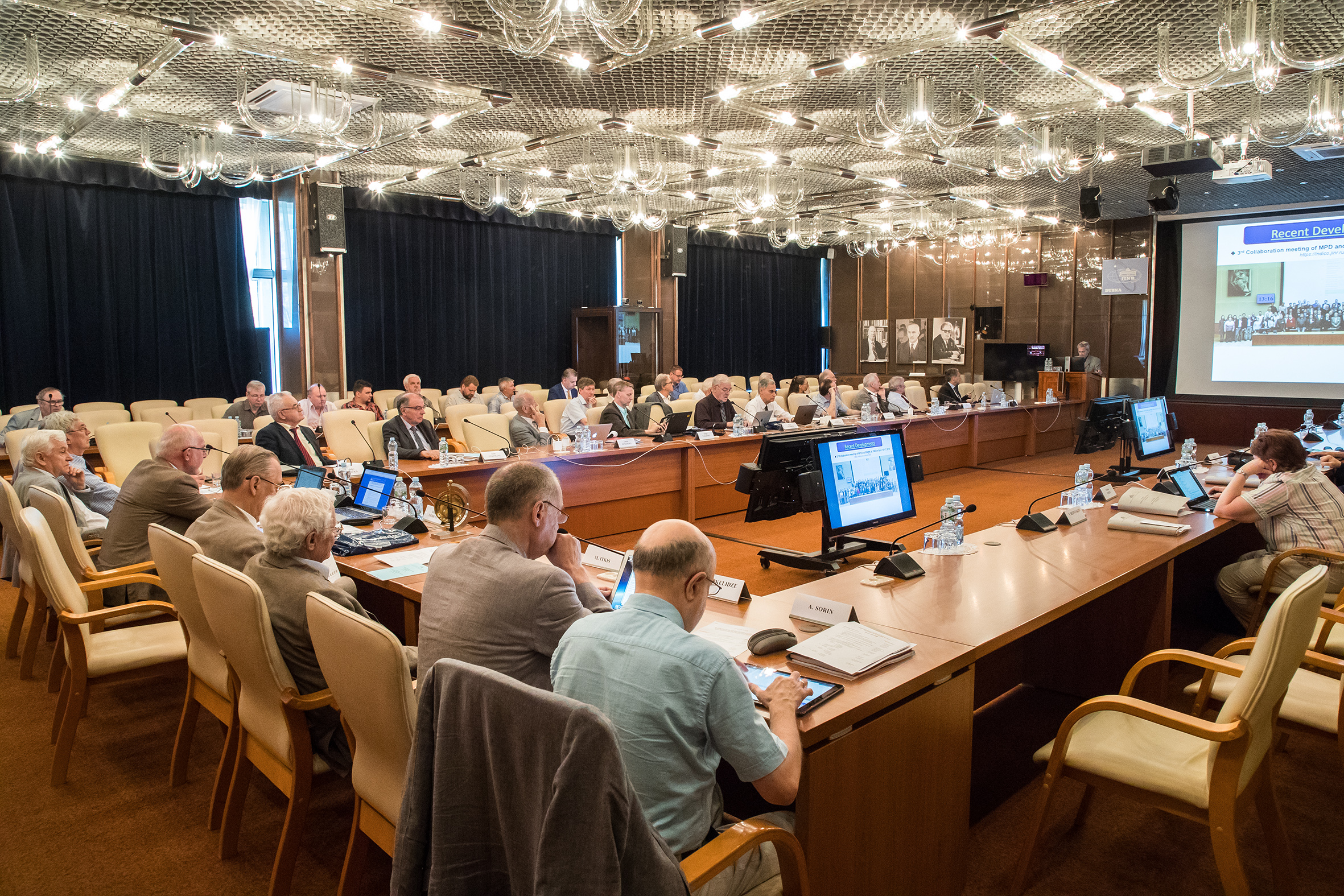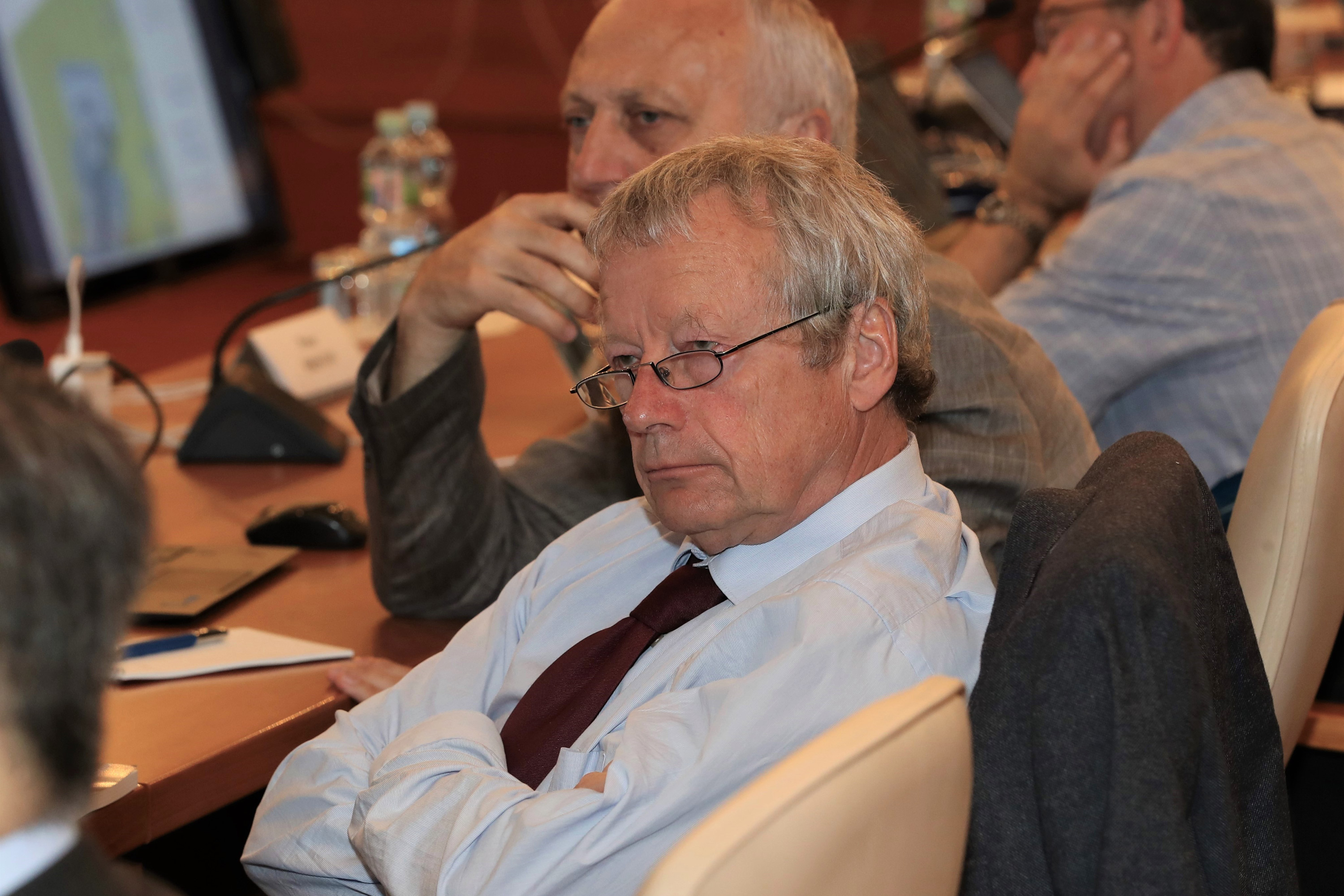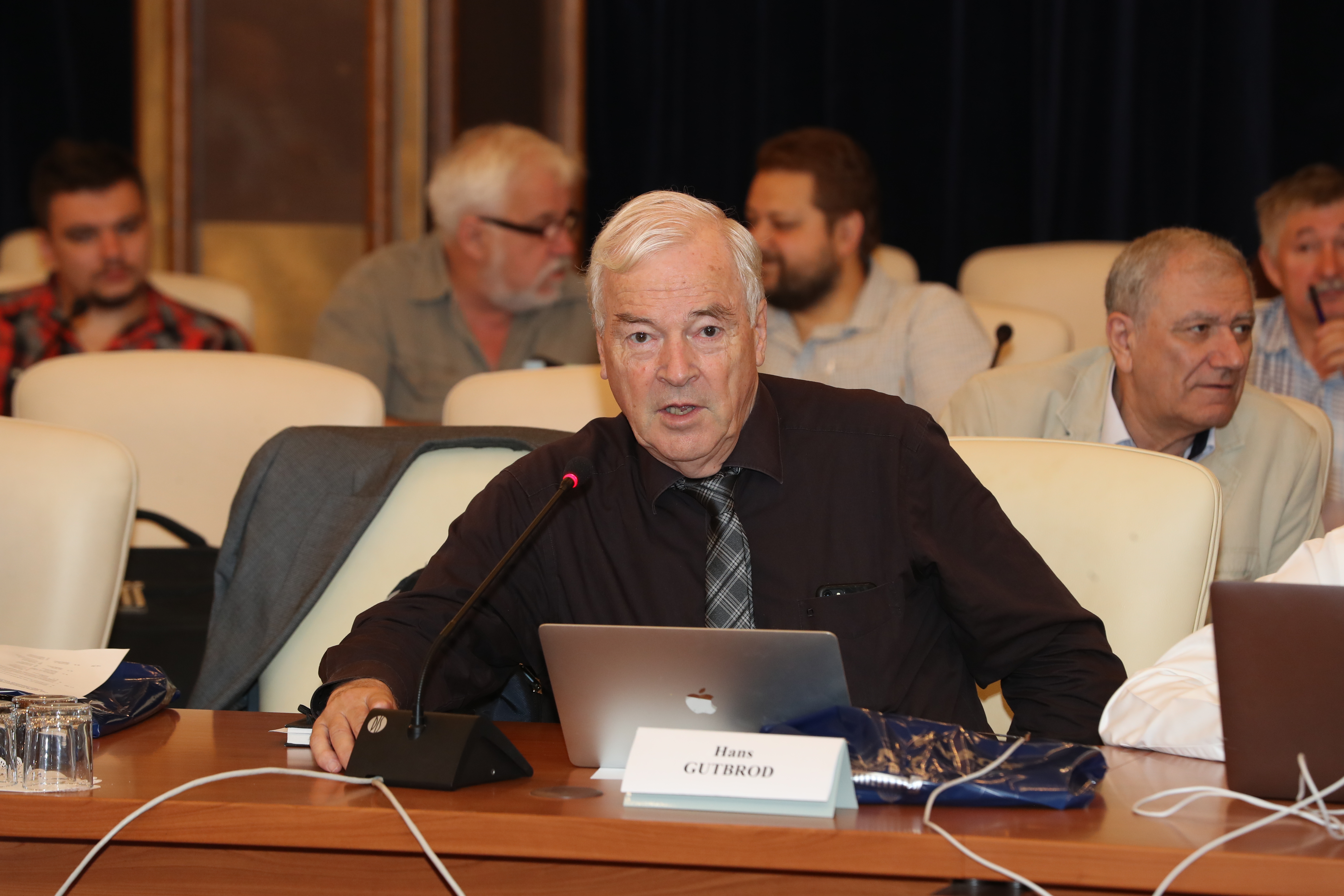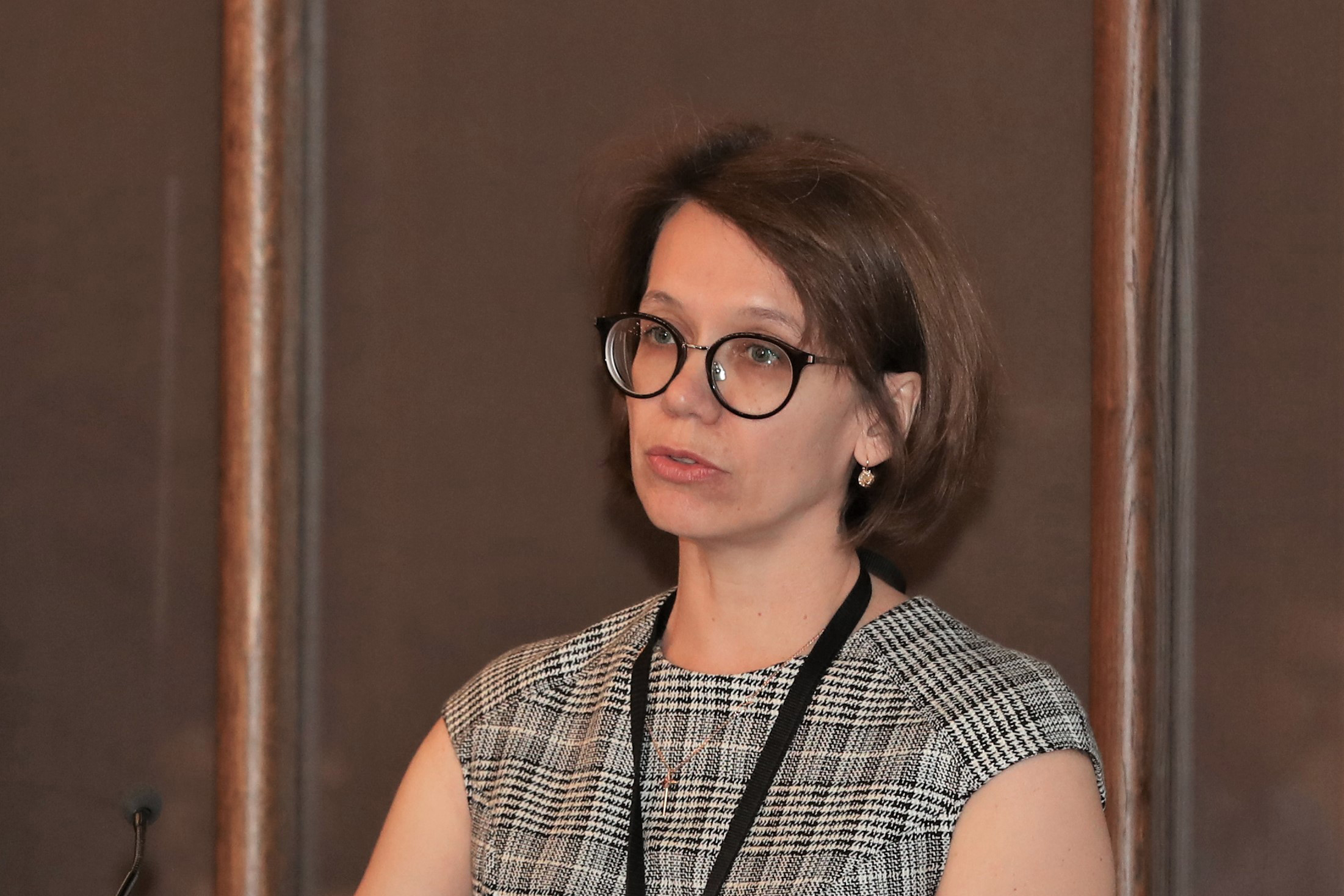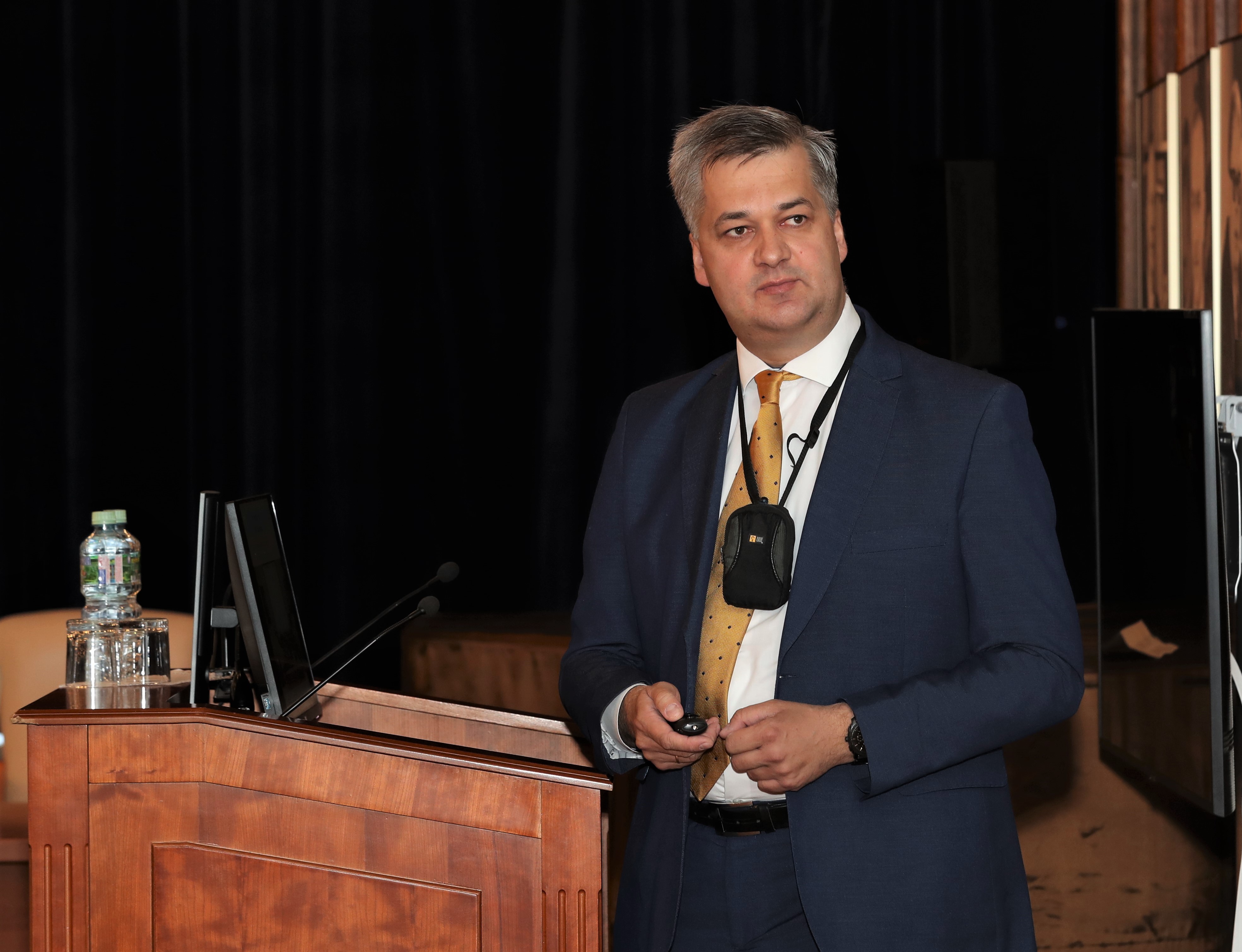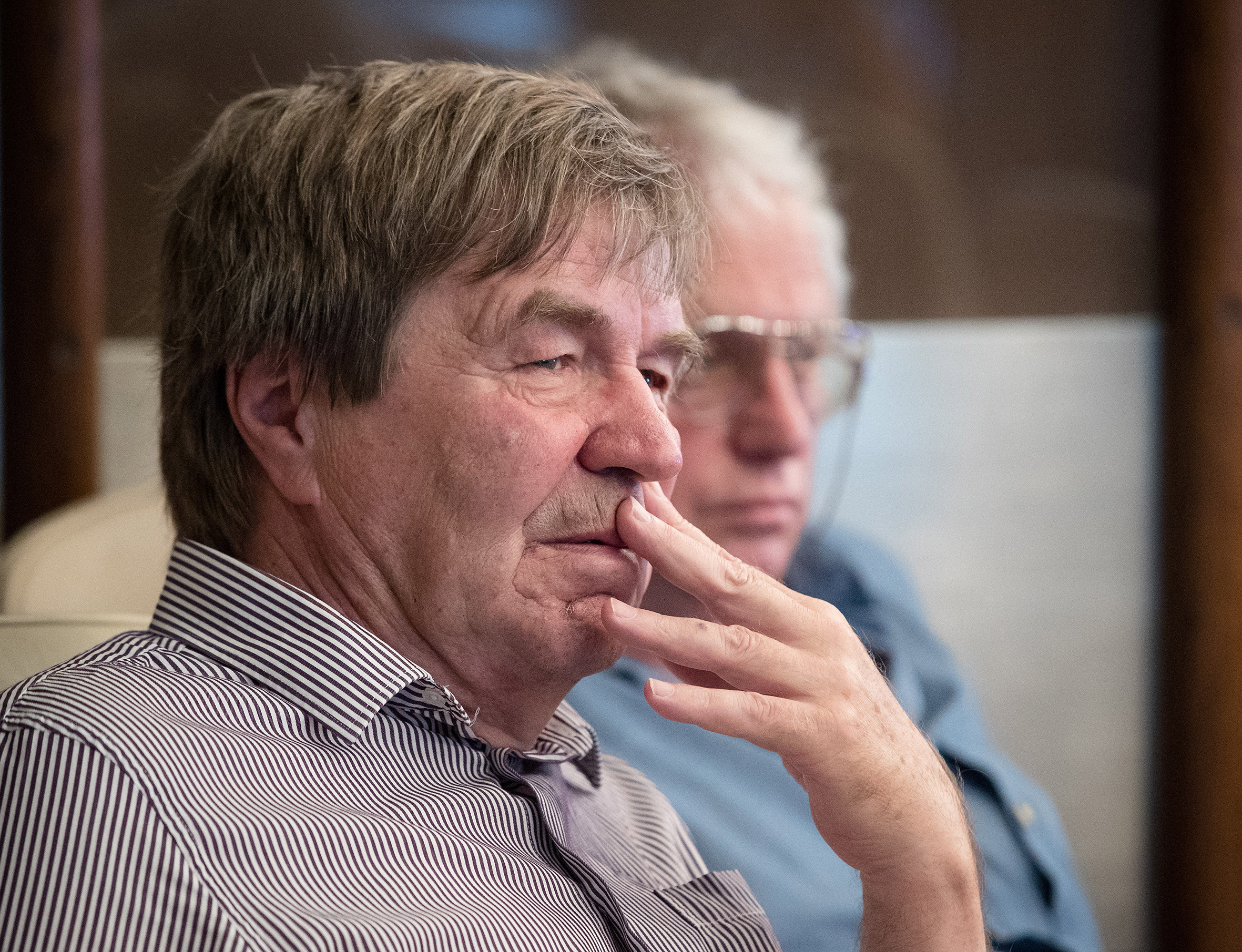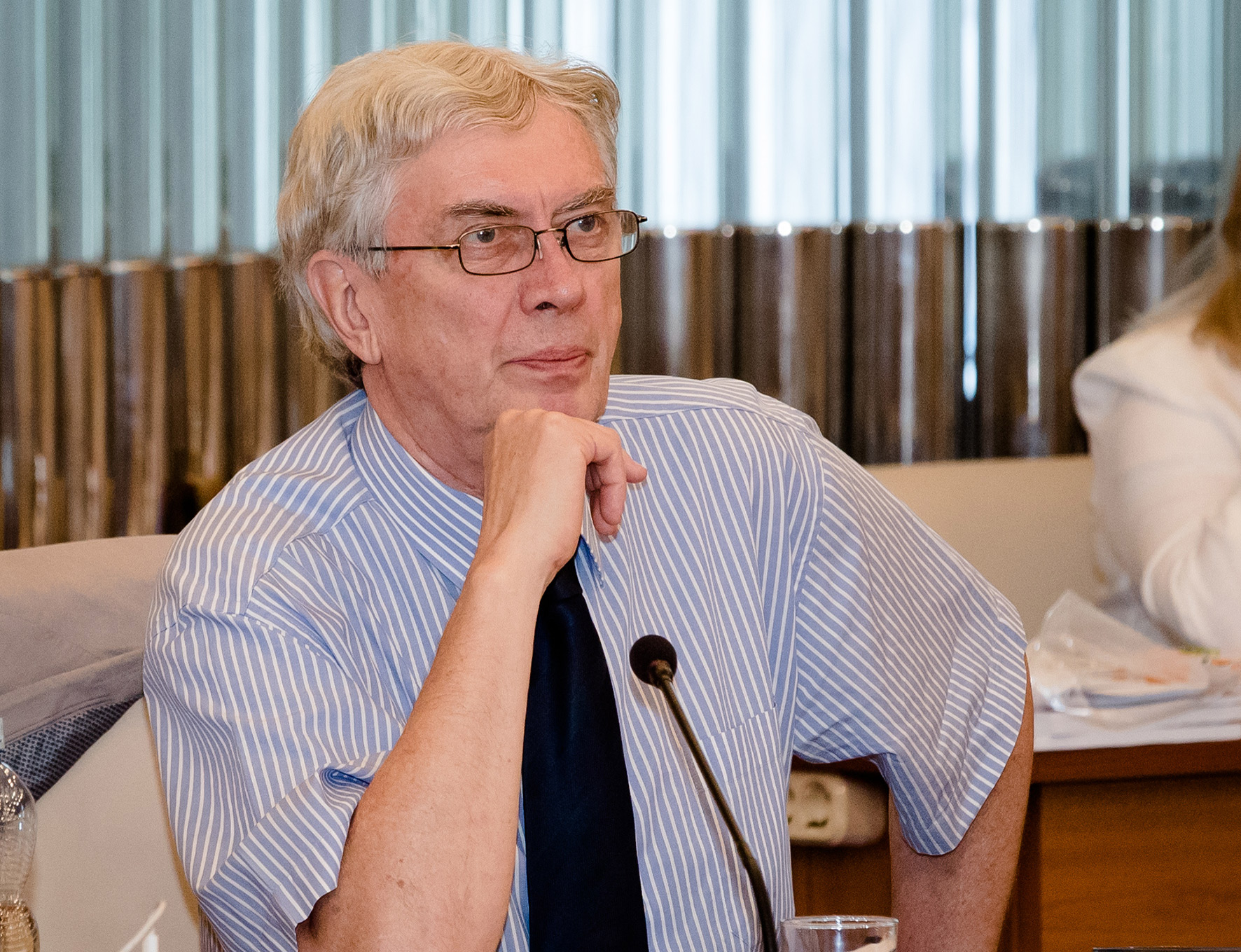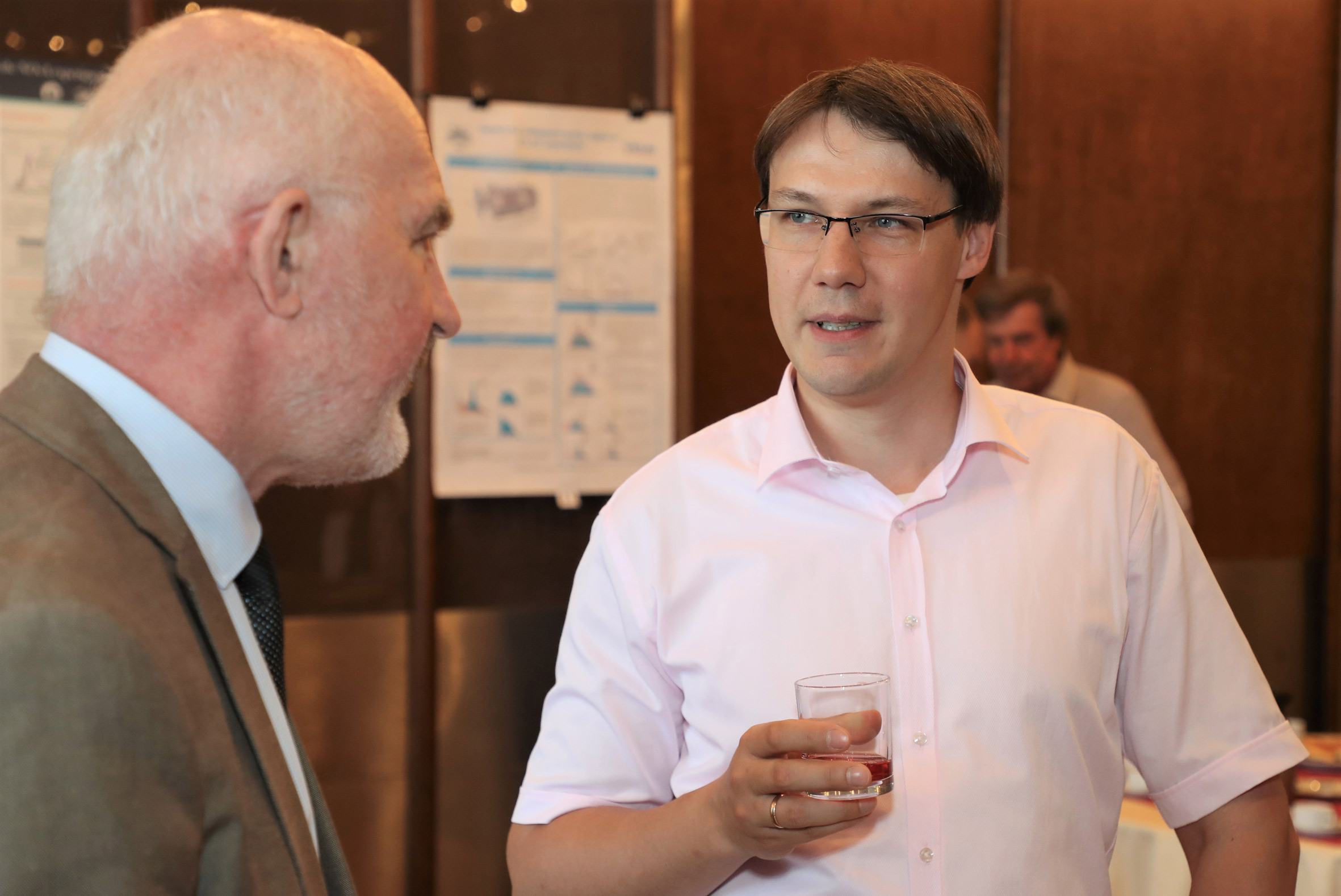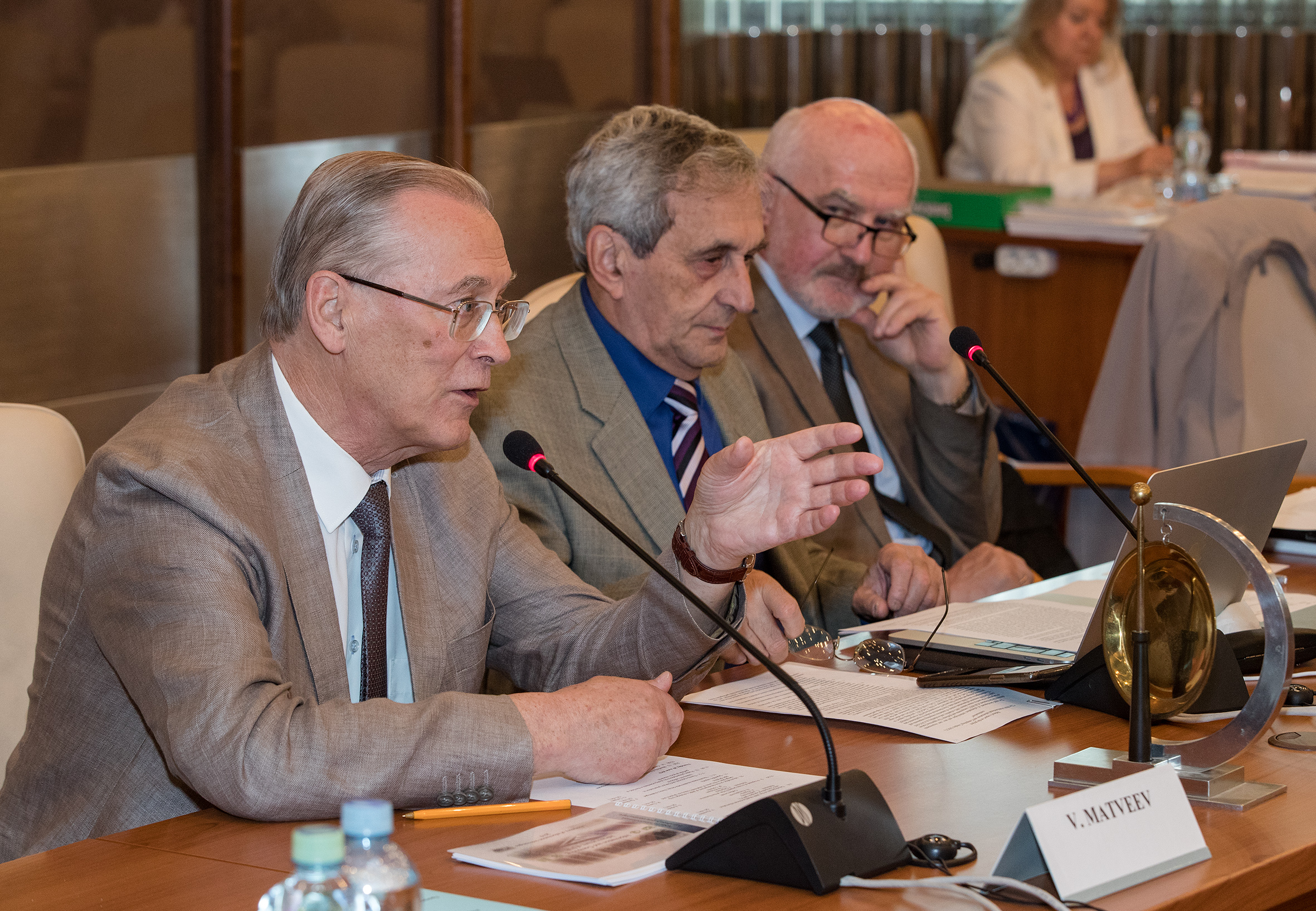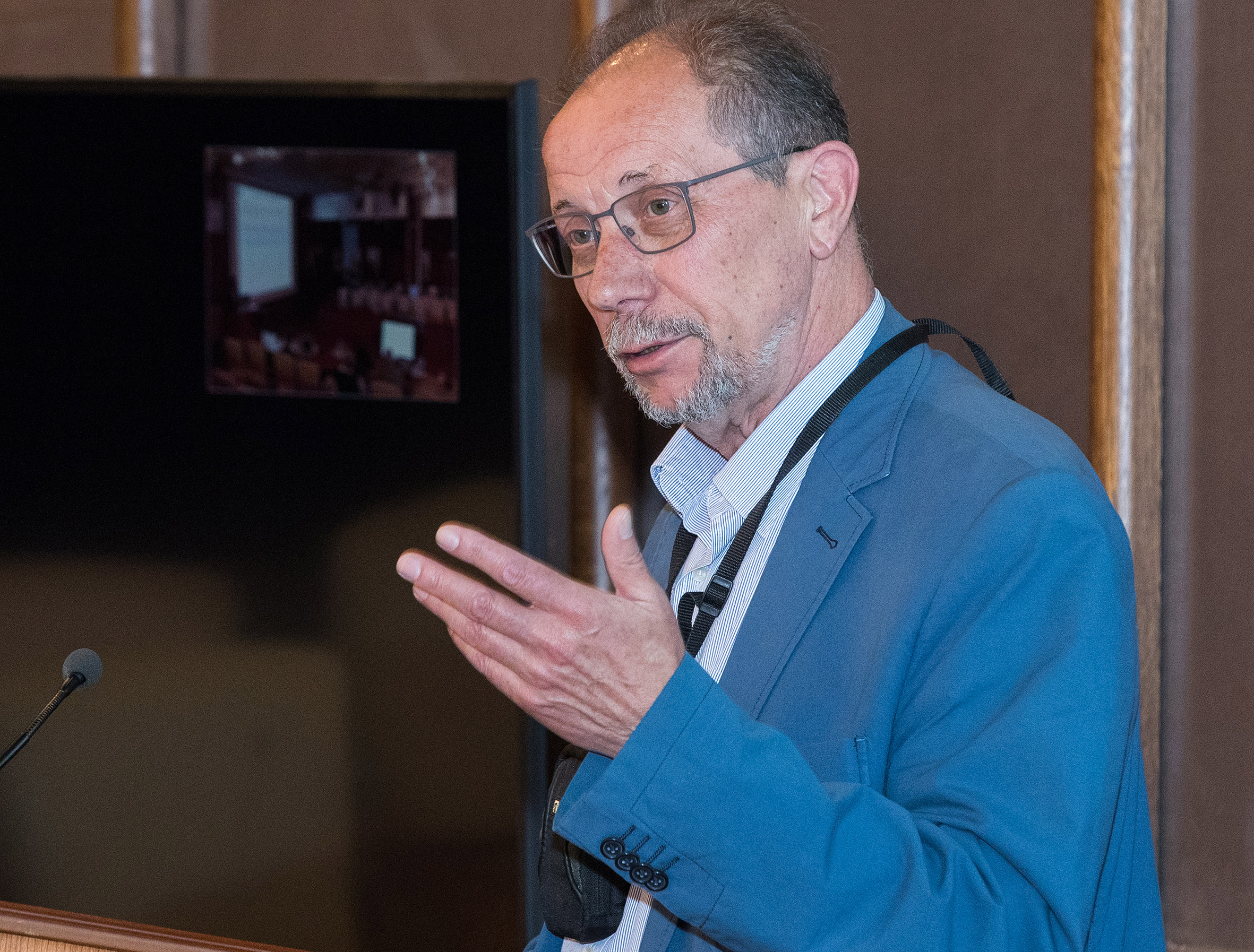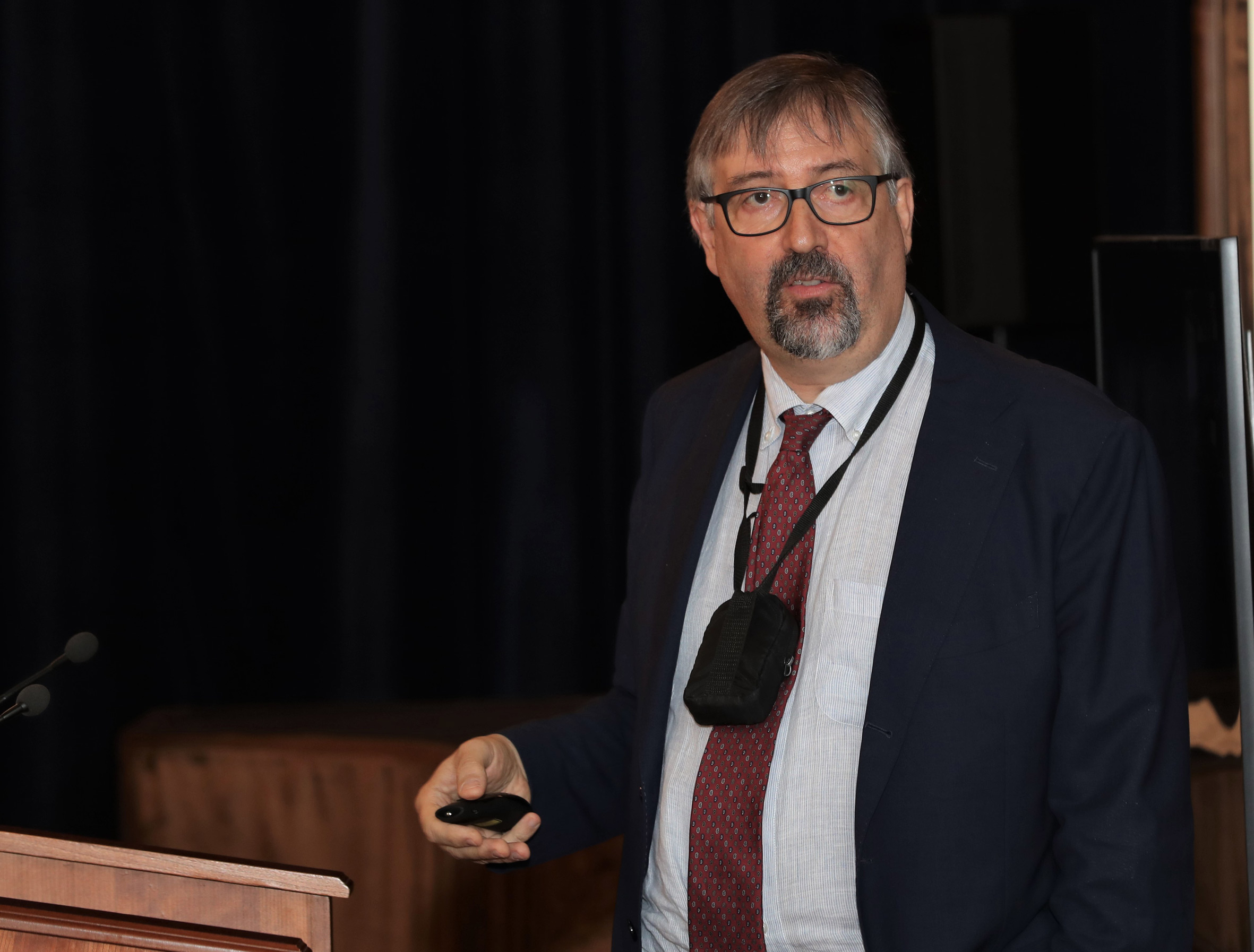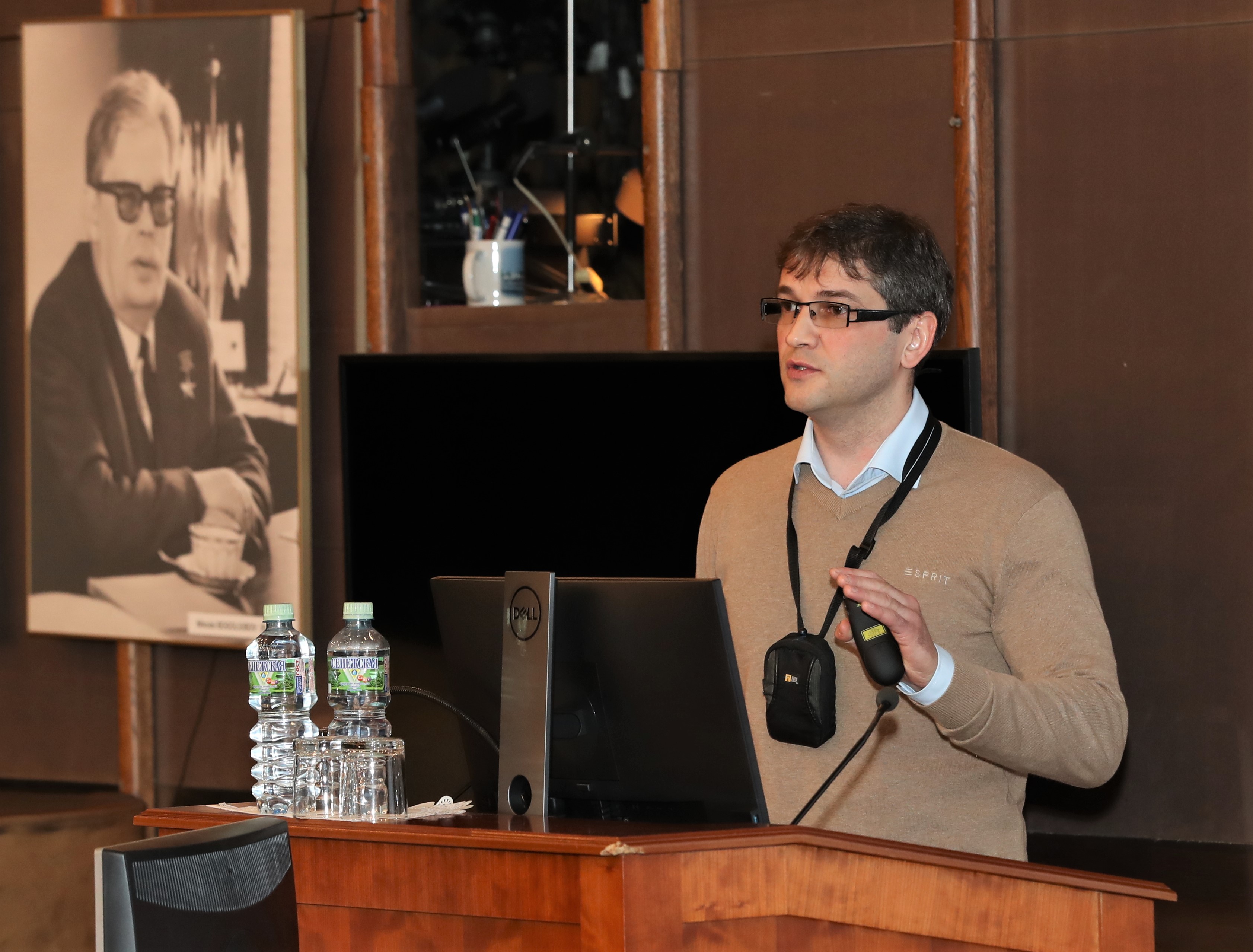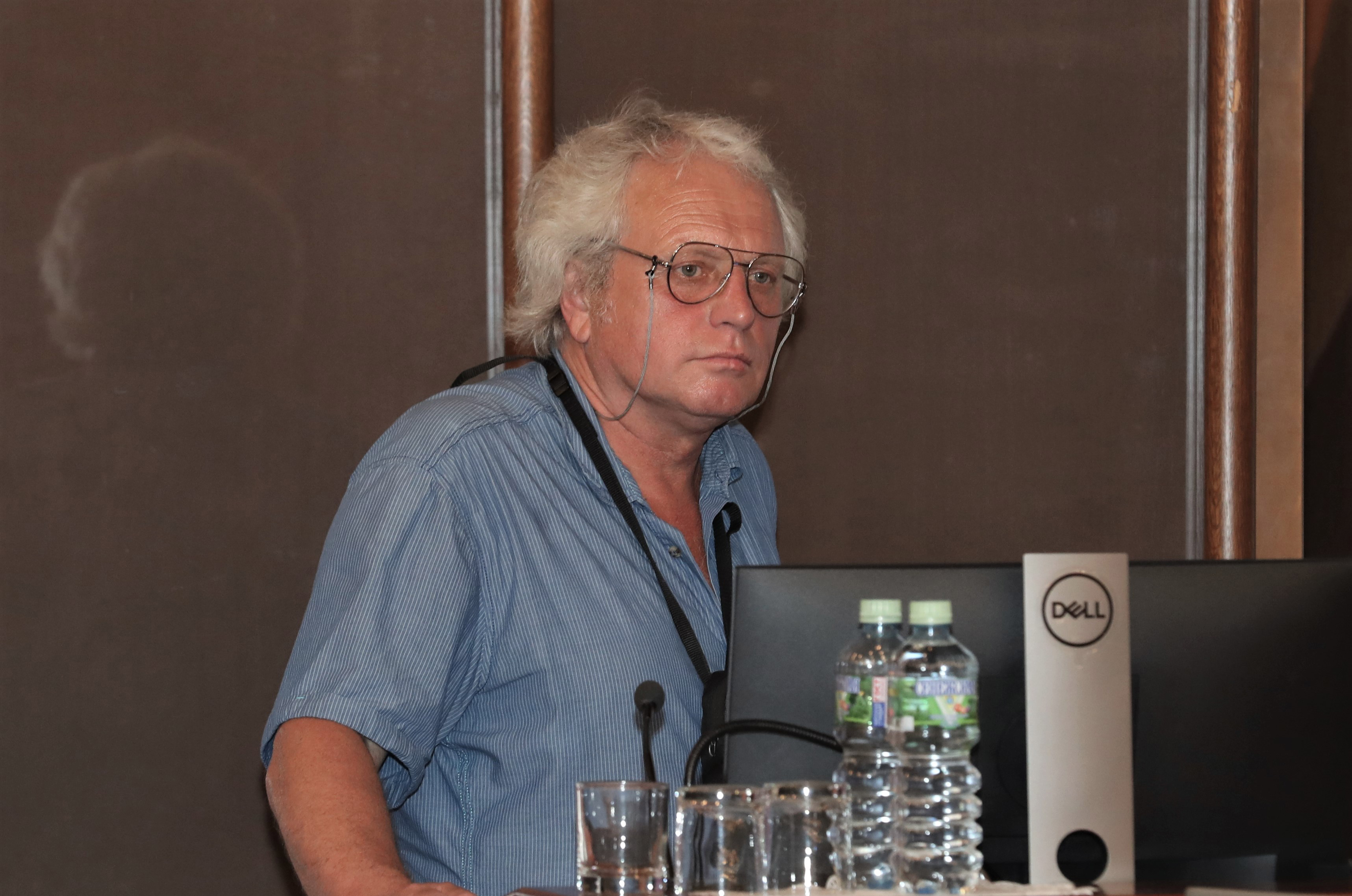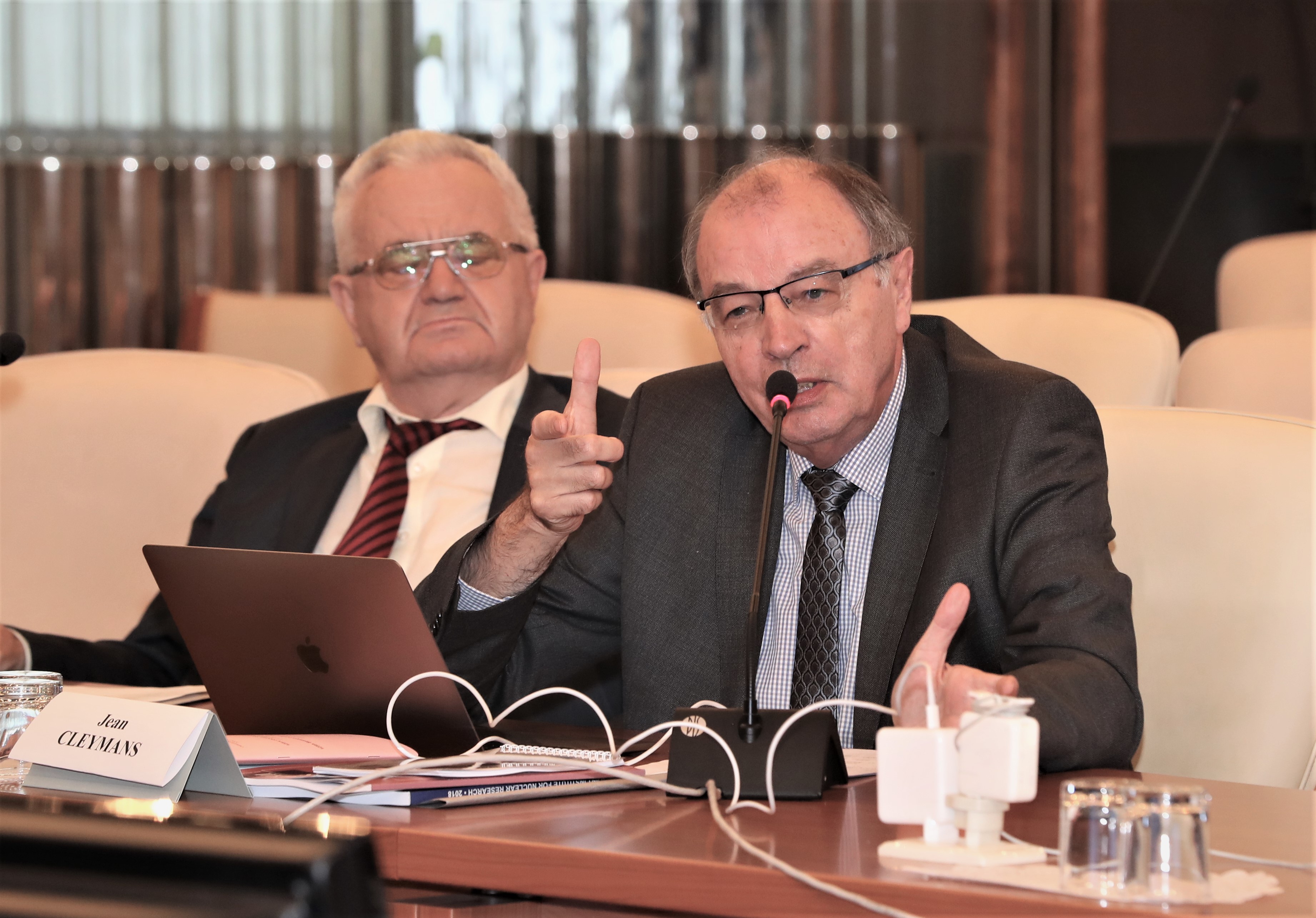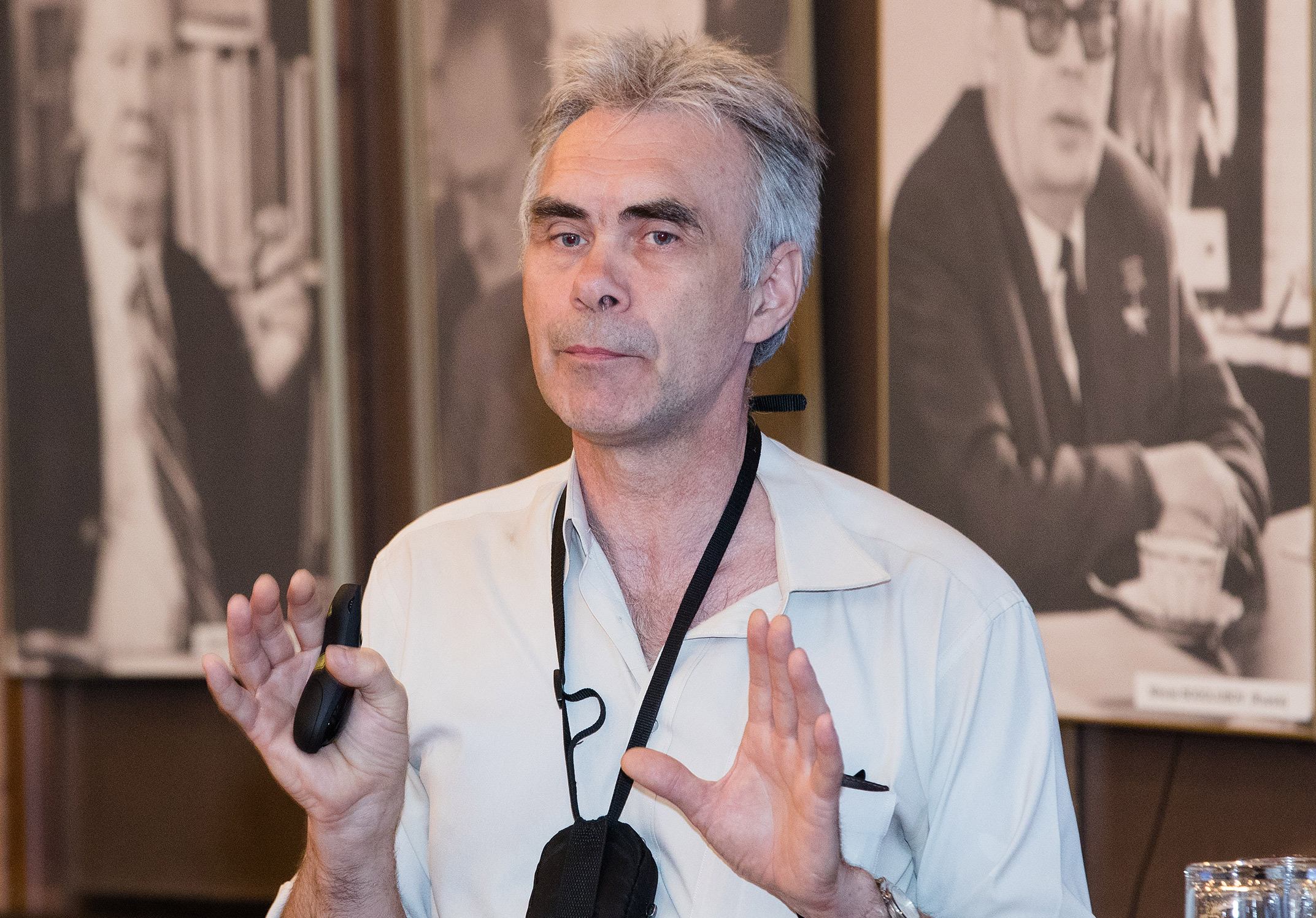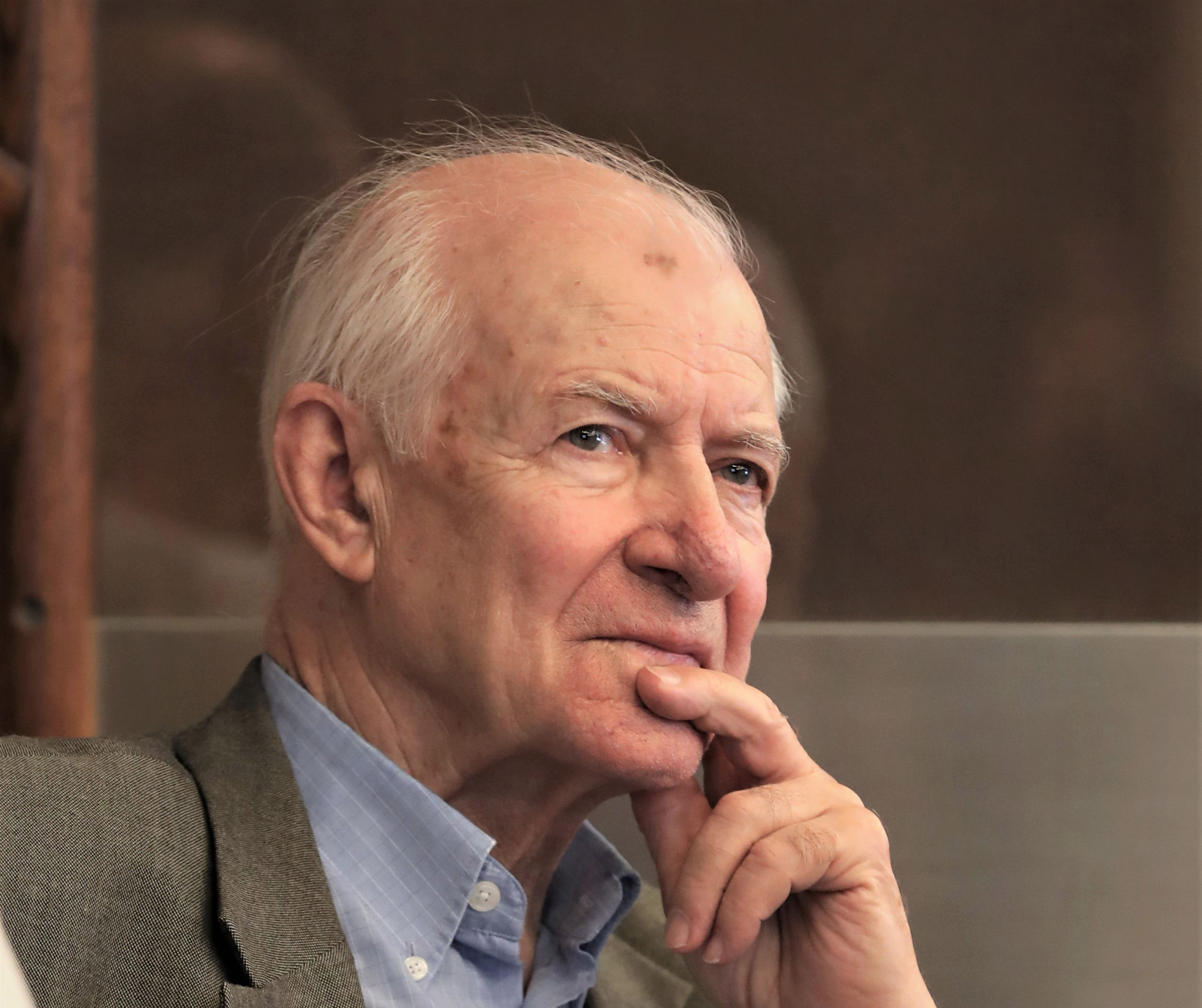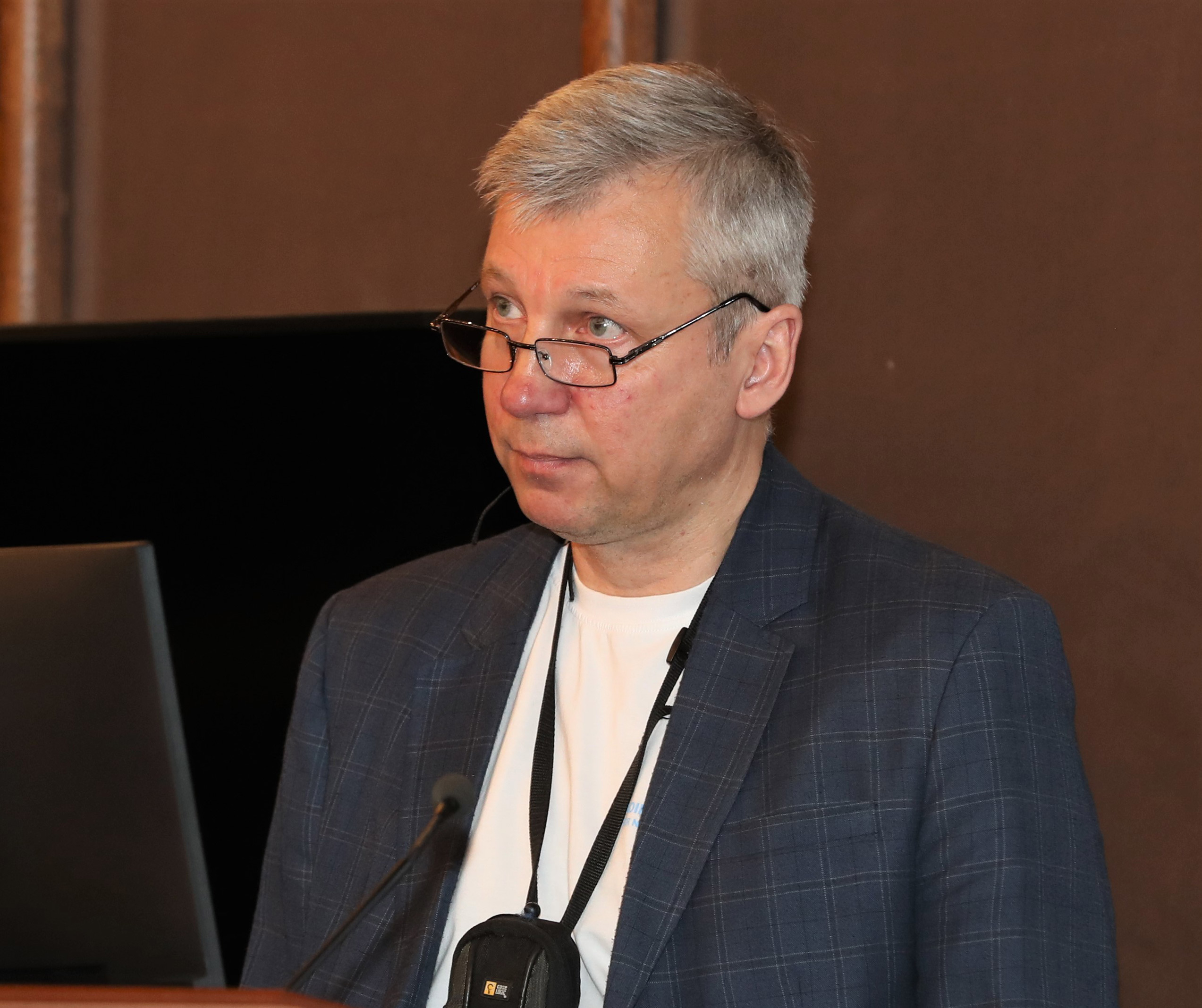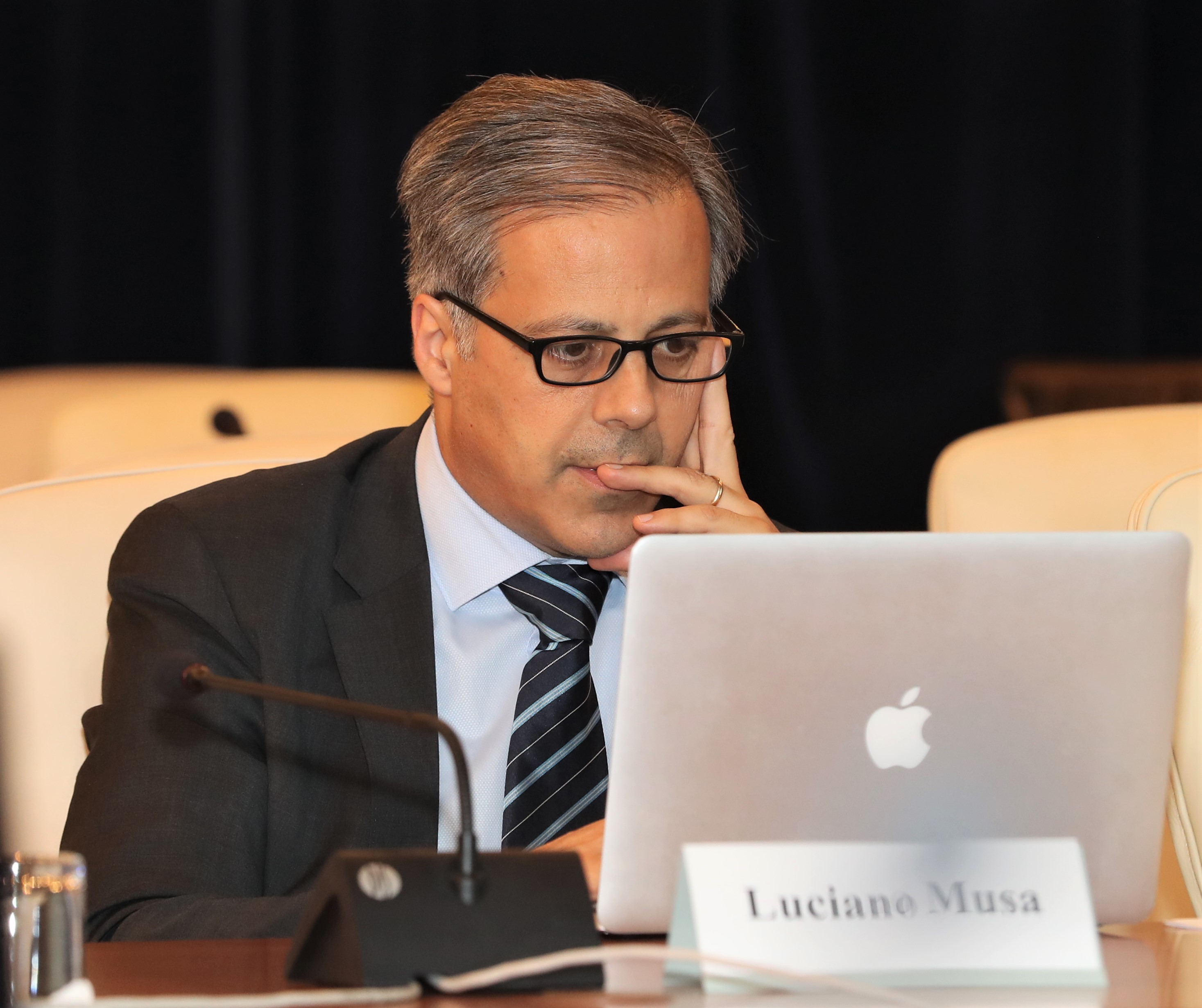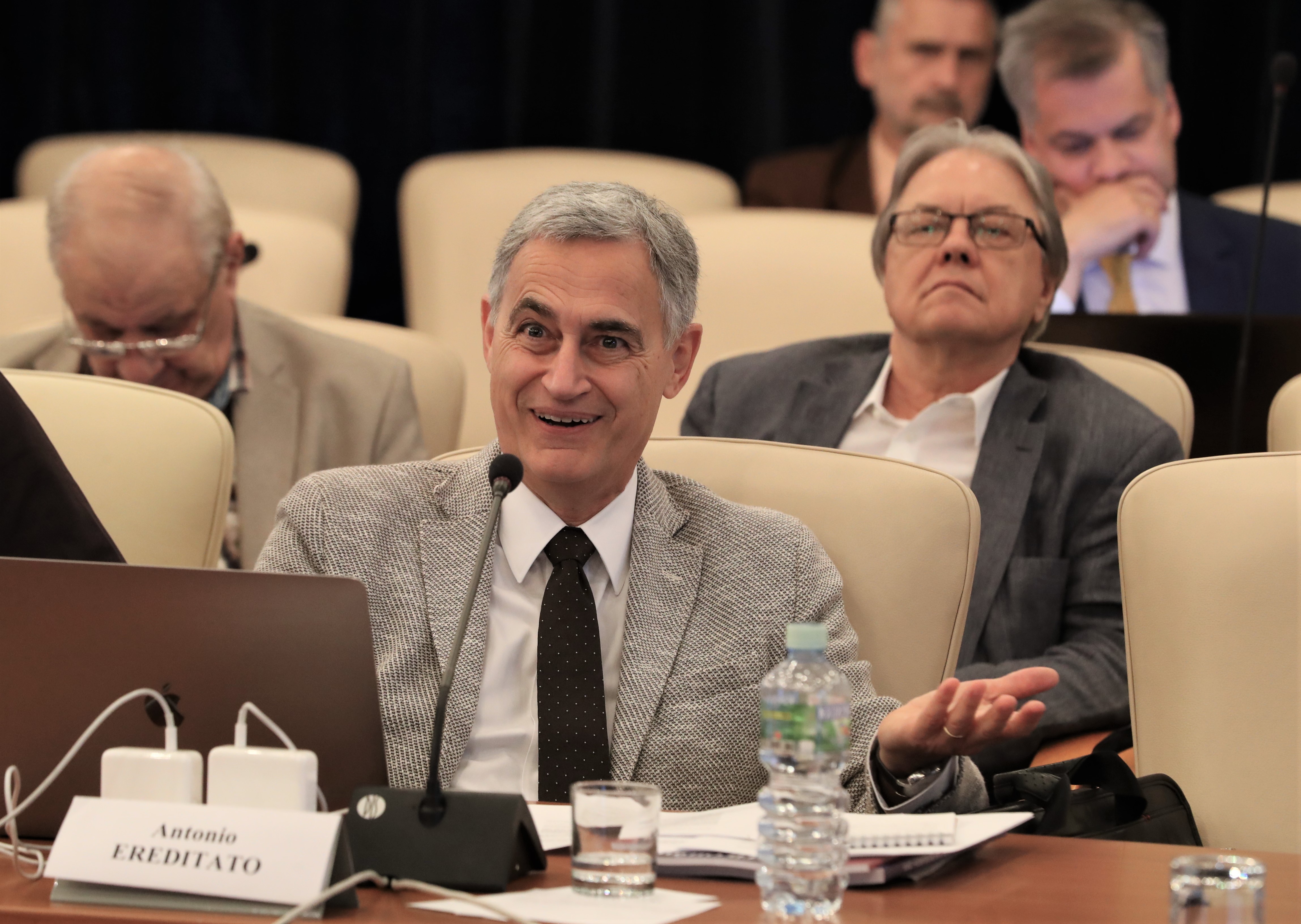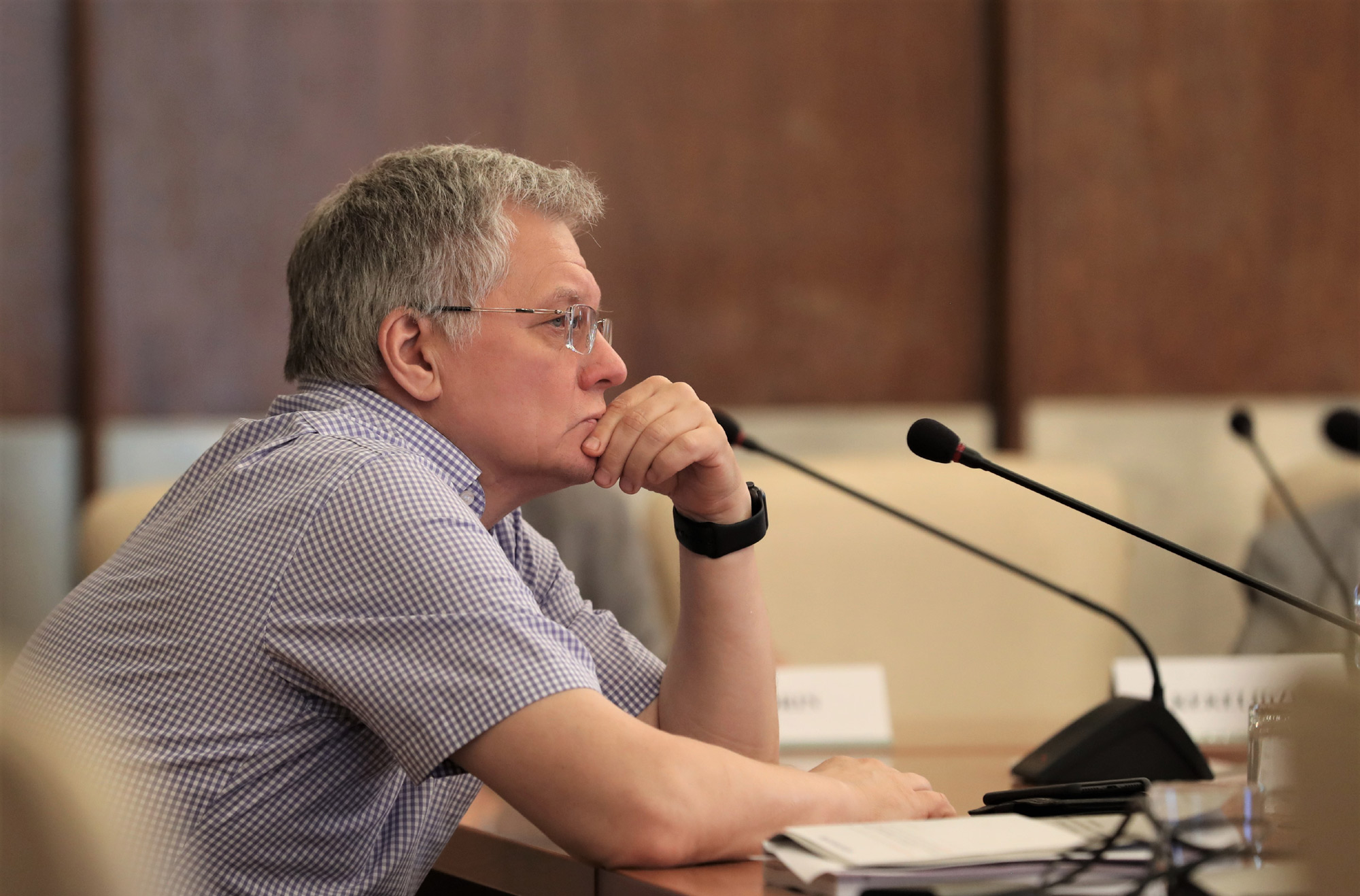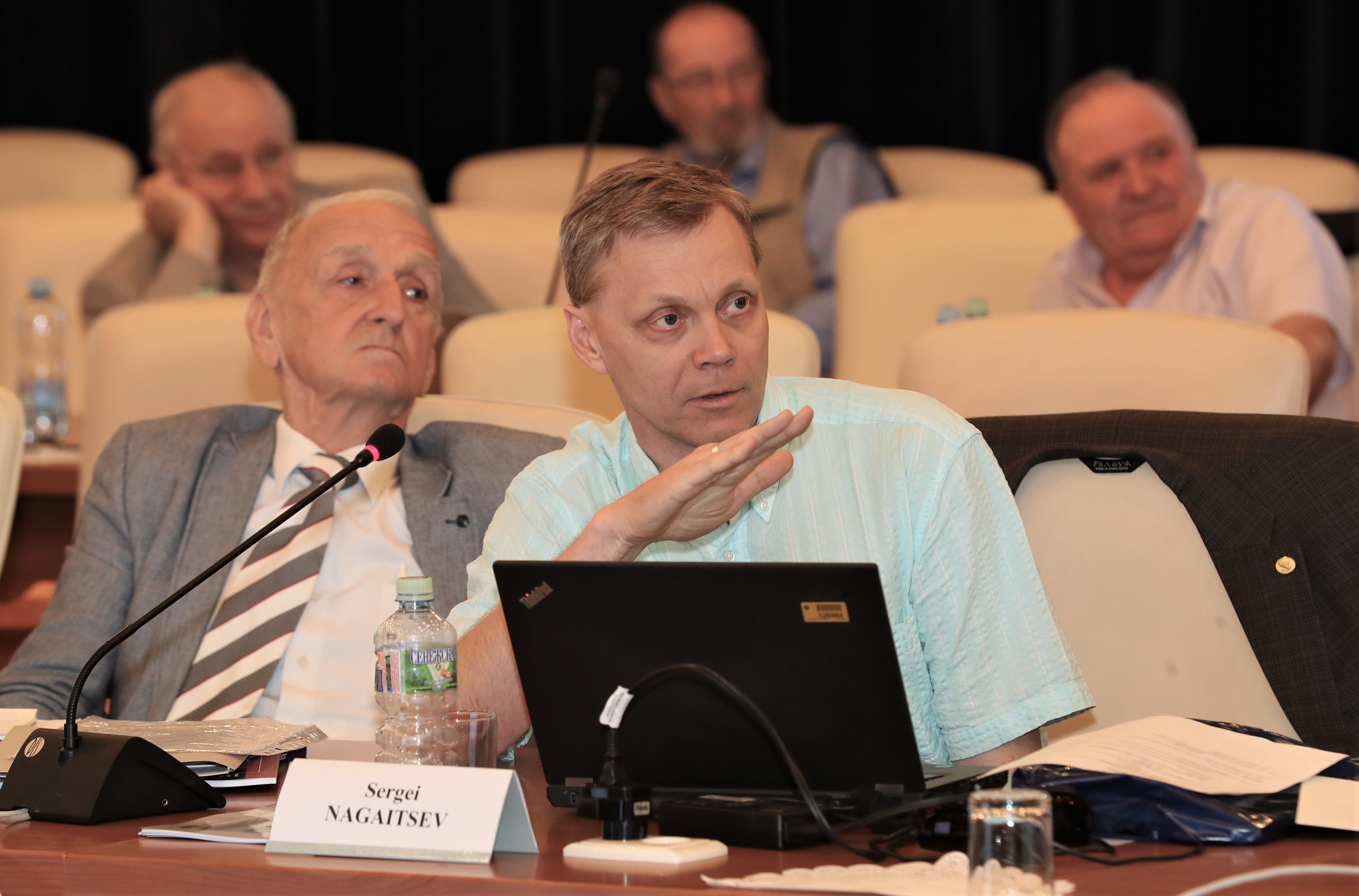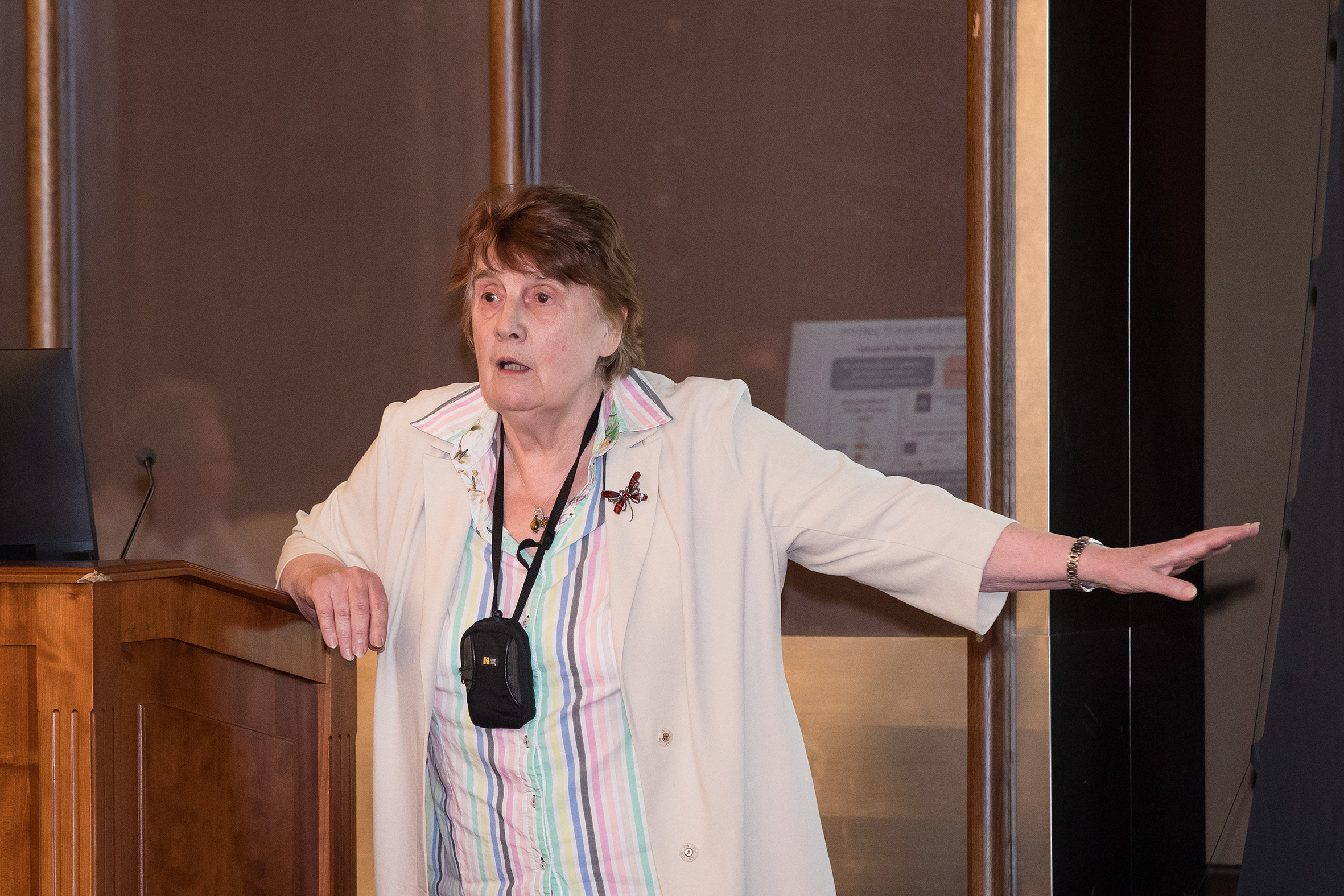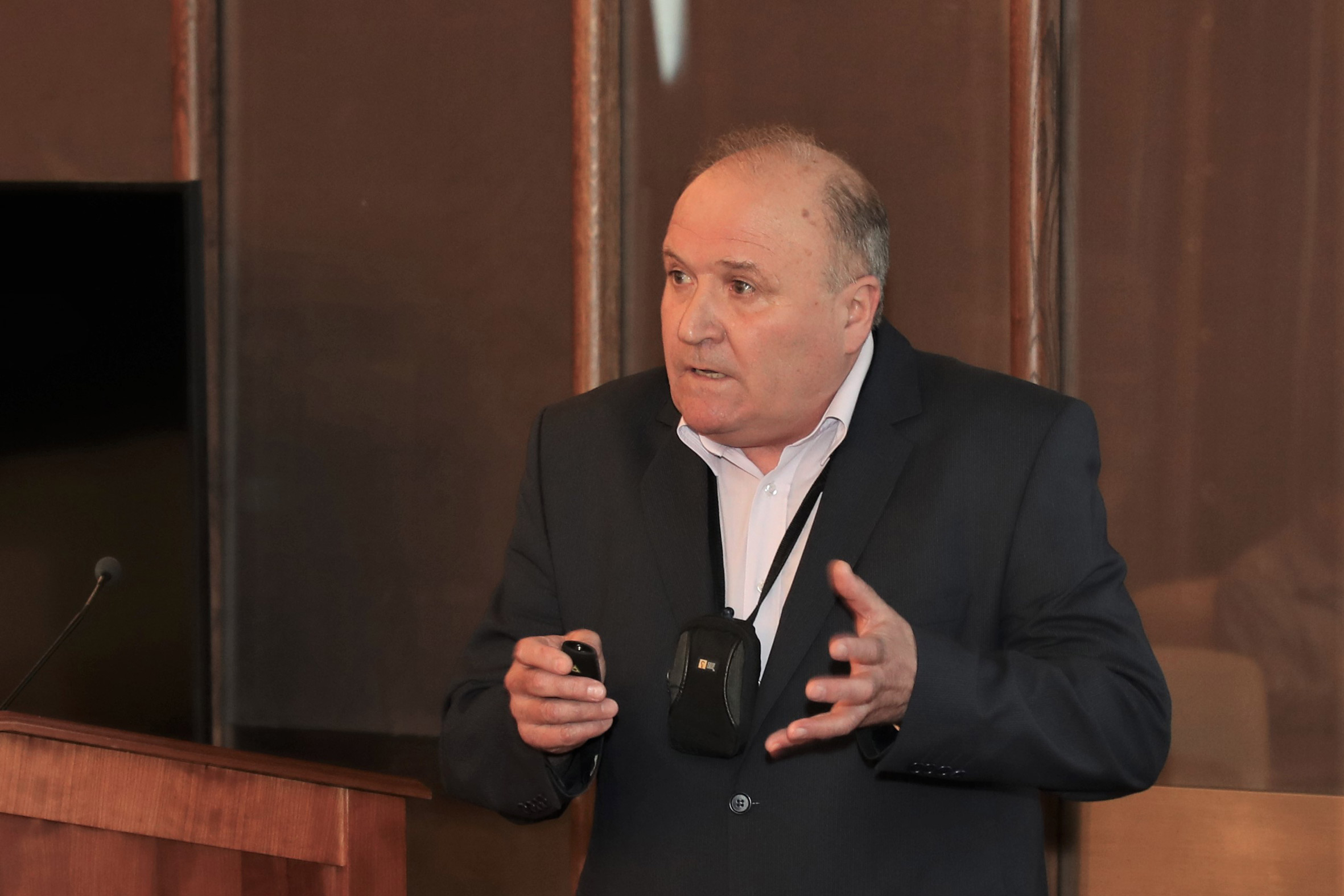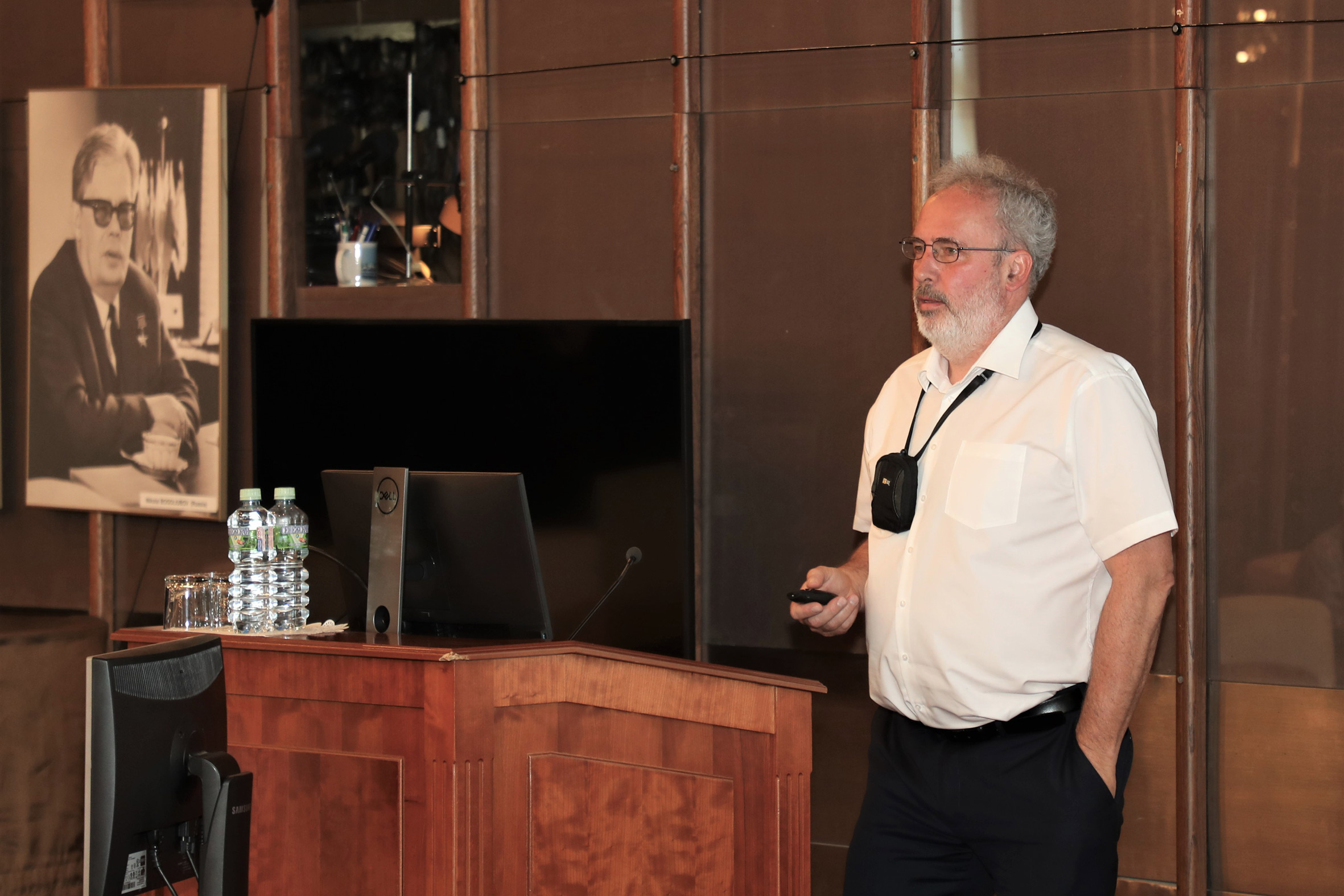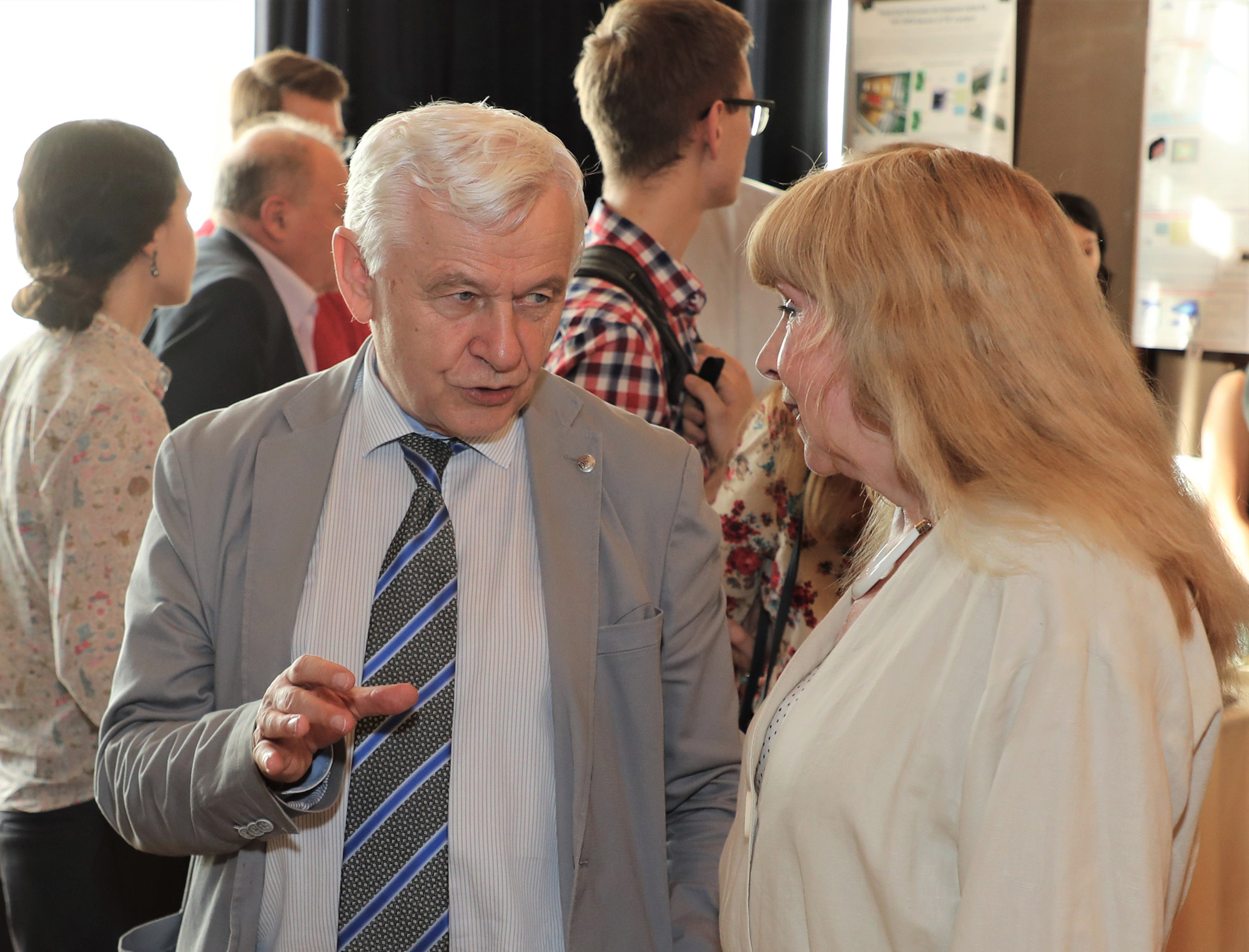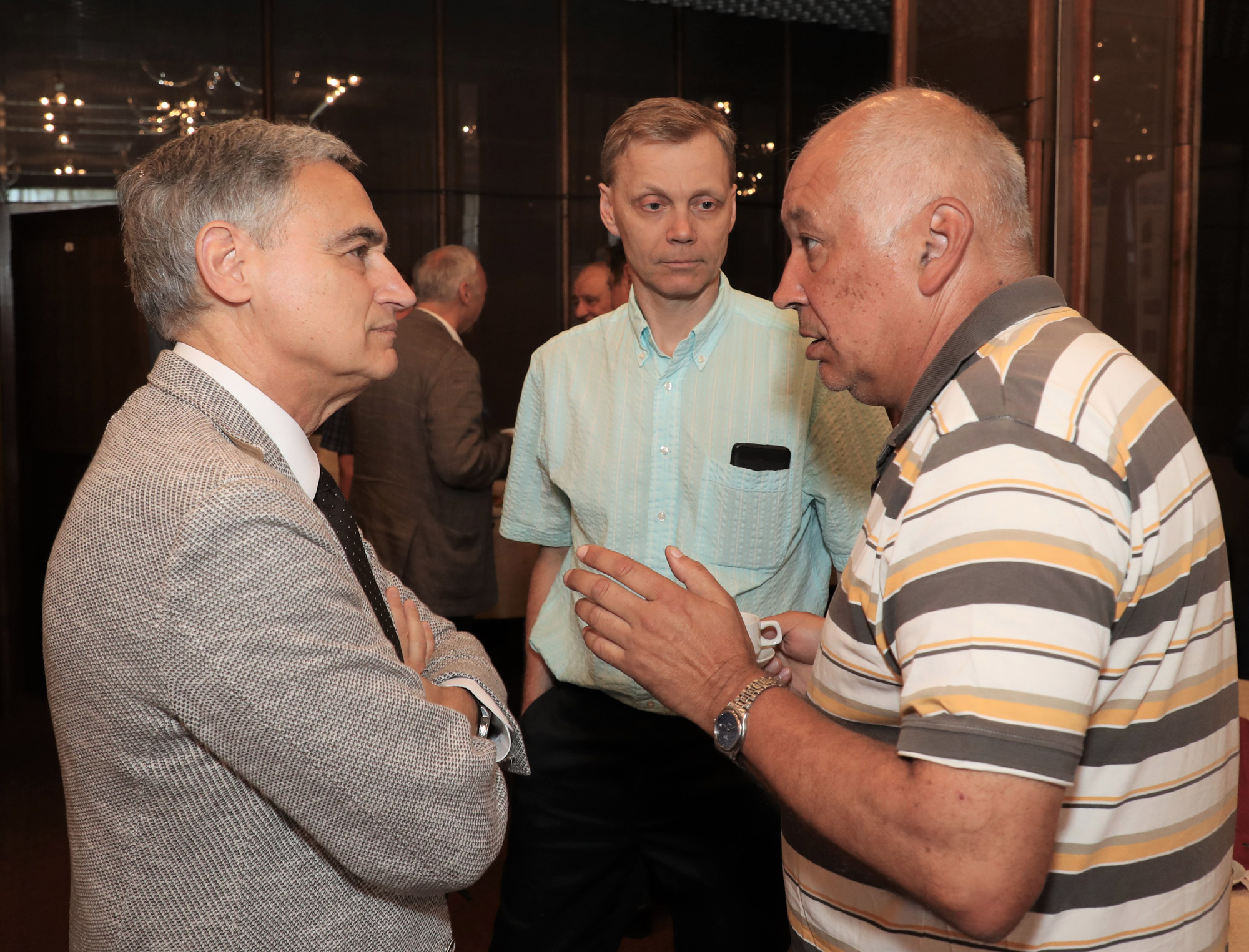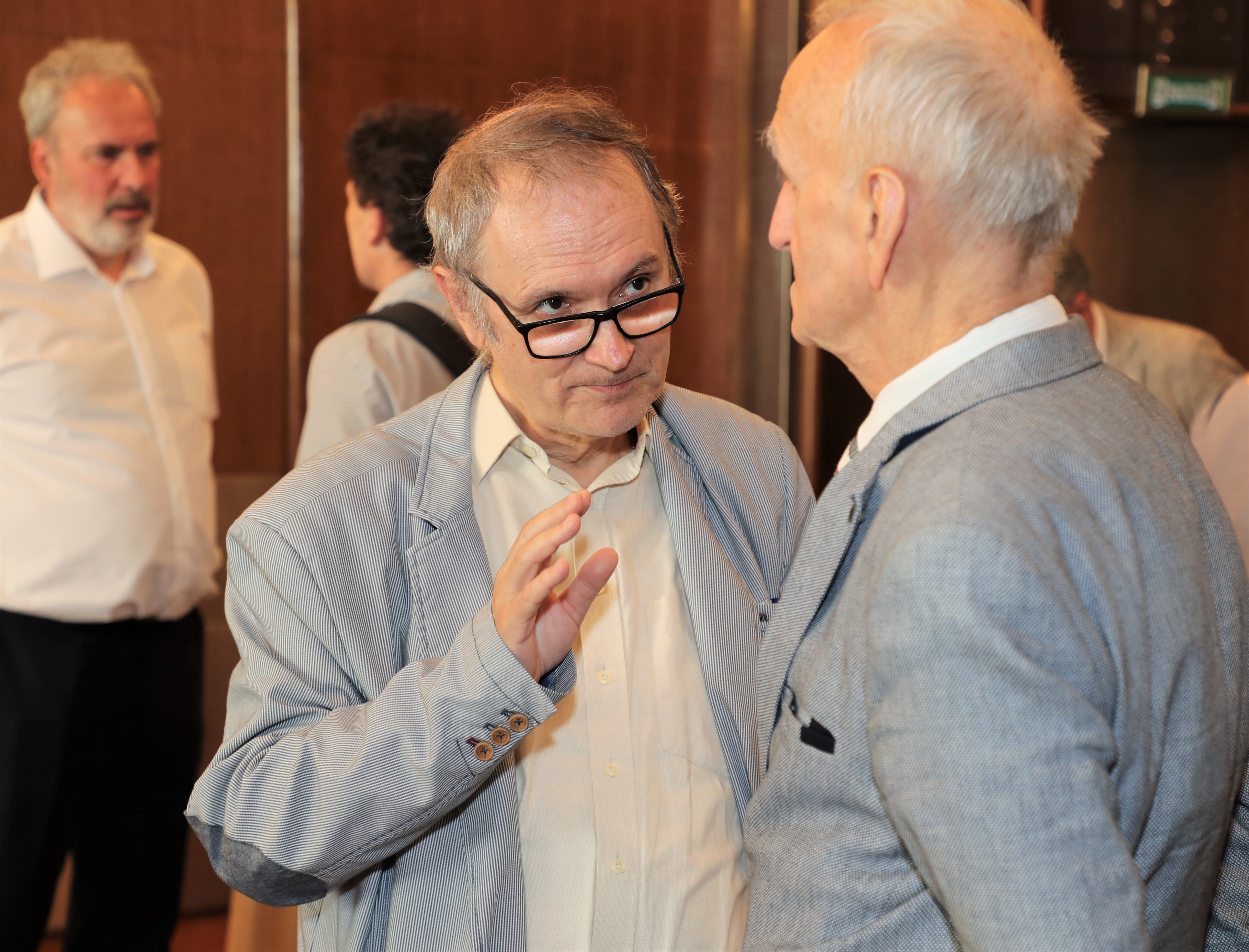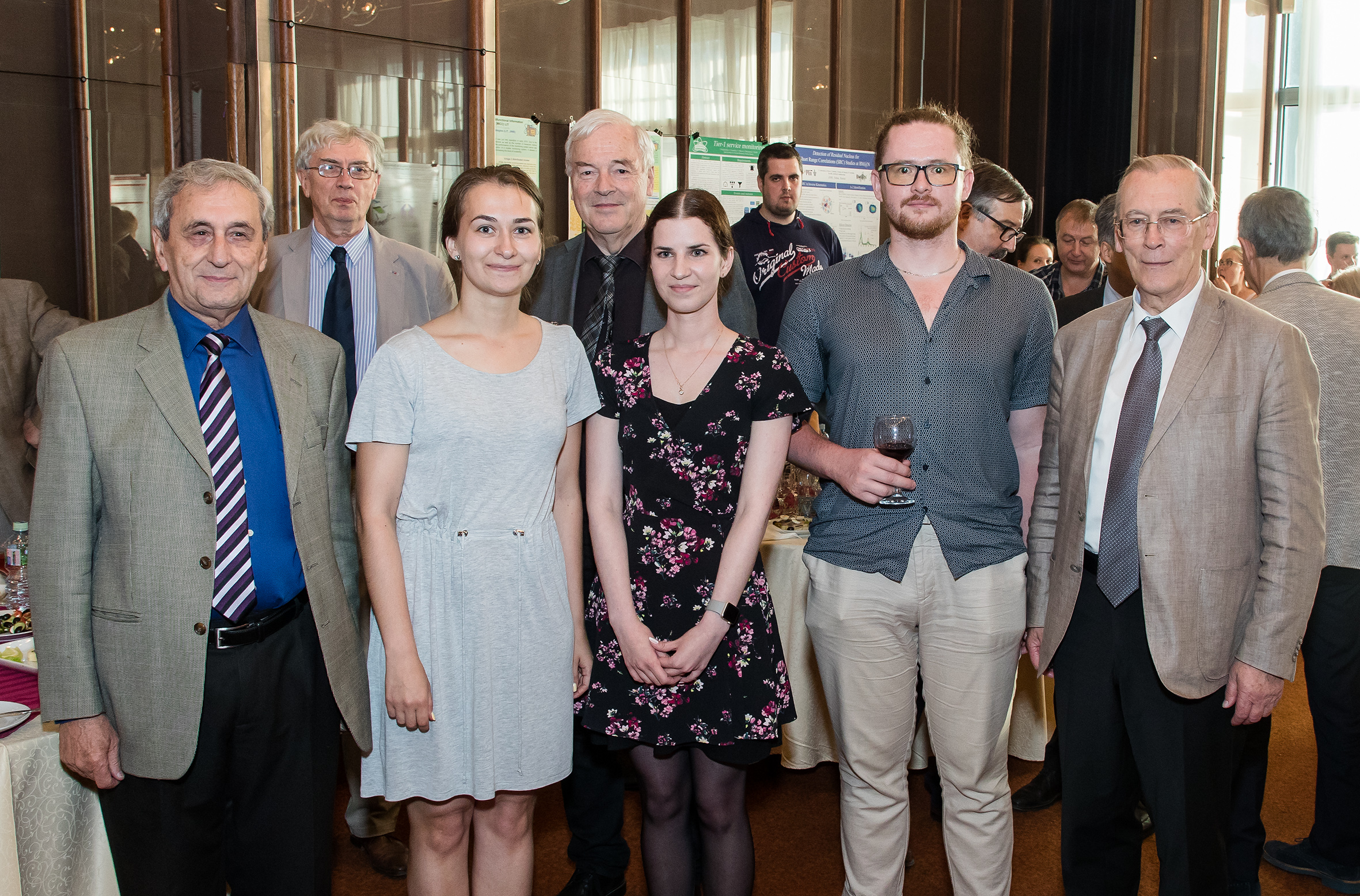Particle physics: NICA, LHC, and other projects
Organization, 05 July 2019
A meeting of the JINR PAC for Particle Physics was held on 19 – 20 June 2019 in the International Conference Hall. It was opened by PAC PP Chairman I. Tserruya who presented the information on the implementation of the recommendations of the PAC’s previous meeting. JINR Vice-Director R. Lednický reported on the Resolution of the 125th session of the JINR Scientific Council and on the decisions of the JINR Committee of Plenipotentiaries.
Head of the Scientific and Experimental Department of Superconducting Magnets and Technologies S. A. Kostromin made a report on the progress towards the realization of the Nuclotron-NICA project. Sergey Alexandrovich told to journalists in the interview that now the assembling of the NICA booster is carried out at the NICA construction site, and there are some technical difficulties that are planned to be overcome and thus all magnets will be placed in the ring in two-three months. It is planned to conduct a test launch, and then the launch of the accelerator with a beam. Moreover, assembling, construction, and testing of systems of the collider at the test area are being carried out. Preparation to the upcoming assembling of these systems in the tunnel of the facility when the building infrastructure will be made is being conducted. PAC experts supported active work on mounting superconducting magnets in the frame of the Synchrophasotron and expressed their hope that assembling and bringing into operation would be concluded until the end of 2019. The wish to improve diagnostics of the accelerator complex was also expressed.
Head of the Group of the Research Cryogenic Department Yu. A. Mitrofanova reported on the infrastructure development, including the Nuclotron: “The report presented information on the development of the electrical system in our laboratory, what constructions have already been and will be constructed for this project. And the most important thing without which we will not launch our accelerator complex is the development of cryogenics for the NICA complex. What we already have for cryogenics at the Nuclotron, how we see the development for next years.” PAC members noted the achieved progress and supported VBLHEP efforts to overcome delays in the construction of premises for the infrastructure of the NICA complex.
Head of the MPD collaboration A. Kisiel presented a report on the progress towards the realization of the MPD project. Participants of the meeting noted efforts to develop elements of the detector, its computational and software infrastructure. “All major elements of the detector are being developed; key elements of the magnet will be delivered to the hall of the NICA collider until the end of the year,” A. Kisiel said to journalists. “It will allow us to start the setup of all the components and constructions inside the magnet. The MPD international collaboration is developing. 33 organizations from different countries all around the world and more than 450 scientists work in the project. Nowadays, we carry out Monte-Carlo modelling for our experiment: we test major physical values, particles’ pulses, distributions and correlations, we try to make sure that all the detector’s components operate correctly.” PAC members highly appreciated joining of Warsaw University and China Institute of Atomic Energy to the MPD collaboration, and also extensive work on the establishment of the council for the detector, the executive council, and working groups for physics in the frames of this cooperation.
Participants of the meeting heard the report on the progress towards the realization of the BM@N project presented by M. N. Kapishin. The Committee congratulated the BM@N team on obtaining the first physical results and called alongside to reduce the time between data acquisition and obtaining preliminary results. The progress of preparation of the BM@N facility for experiments with heavy ion beams planned to be launched in 2021 was highly appreciated. “The first success is that we have acquired the first physical results and have reported on them in Bari at the conference “Strangeness in Quark Matter”, Head of the Collaboration M. N. Kapishin said in his comments. “The results were positively met; the experiment started to give physical information. We prepare the research programme at heavy ions. The programme will be launched at the end of 2020 after Nuclotron’s modernization and the booster’s bringing into operation. We work with a group from Germany (Darmstadt, Tubingen) in collaboration with Moscow State University. They will produce for us silicon tracking system of the large aperture with a large number – 600 thousand – of read-out channels. It is an ambitious project, and we hope that it will be implemented in time.”
Reports on projects approved for completion in 2019 and proposals for their prolongation continued the meeting of PAC. Firstly, reports on JINR participation in experiments at LHC were made. According to the JINR research plan, each of three themes, namely ALICE, ATLAS, and CMS, has two projects, one of which deals with the analysis of physical data, and the other one is devoted to the development and service of the detector. PAC experts expressed the opinion that this separation into two projects is unjustifiable. They recommended to the JINR Directorate to consider uniting two kinds of activities into one project for better regulation of the work progress. All three themes acquired the recommendation on prolongation until 2023 with the first priority. Furthermore, it was proposed to carry out an annual detailed overview of each experiment at LHC and make a short report on the implementation of significant to JINR scientific groups stages every 6 months. Reports were made by V. N. Pozdnyakov (ALICE), E. V. Khramov (ATLAS), and A. V. Zarubin (CMS).
A report on the modernization of the CMS detector presented by Leader of the CMS experiment R. Carlin obtained a high appreciation. Experts were impressed by the scale of the CMS modernization programme Phase-II and expressed their wish for successful implementation of this promising plan with considerable participation of a group of JINR staff members. It was recommended to continue the SCAN-3 project (the report was presented by S. V. Afanasiev) for the period of 2020 – 2022 with the first priority on condition that it would not obstruct the implementation of the NICA project. Considering the report on the NA64 experiment at SPS in CERN (delivered by D. V. Peshekhonov), participants of the meeting noted the relevance of the research programme and the role of the JINR team. However, some critical comments were made on the implementation of the previous PAC’s recommendations. That is why it was decided to postpone the adoption of recommendations for this project until the next PAC meeting in February 2020. Having heard the report on the development of the Multifunctional Information and Computing Complex (MICC) of JINR presented by T. A. Strizh, PAC members confirmed that the Laboratory of Information Technologies successfully meets computation needs of JINR. It was proposed to prolong the project for the period of 2020-2023 with the first priority.
S. P. Avdeev made a proposal to open a new project FASA at the Nuclotron aimed to study position-time characteristics of hot nuclei produced in the collision of light relativistic ions with heavy atoms of the target. PAC members noted that a similar study had been conducted over the years in Fermilab, CERN, and other scientific centres. That is why the experiment needs more convincing scientific justification.
A report on the development of JINR’s strategic long-range plan in the area of relativistic heavy-ion physics and spin physics by R. Tsenov was met with interest. Efforts of the JINR Directorate to distribute priorities and to develop strategic plans were highly appreciated. Further proposals are awaited to be considered at the next meetings. “We have not yet established the SPD collaboration but we are moving in this direction,” VBLHEP Deputy Director R. Tsenov told to the journalists of the Newspaper. “We have founded a committee. Its members will draft the regulations. About 30 institutes expressed their wish to participate in the SPD collaboration. We are, in a manner of speaking, “gaining weight”. On 5 – 7 June, a workshop was held at which more than 50 reports were made on physics possible to be used at SPD, various subsystems of the detector and their design, participation of these institutes, i.e. how many staff members they can send to JINR, how their efforts can be applied. We believe that it was a successful meeting; about 130 participants attended it. The first such meeting was held in July 2018 in Prague. About 60 people took part in it, and now this number was doubled. We cannot firmly state that the project is ready. There are ideas, the concept of how various subsystems are supposed to be organized. Now, we are at the stage of the creation of a so-called conceptual design, and we are supposed to finish it until the end of the year in order to present it at the next PAC meeting. If it is affirmed, then we will spend the next two years developing technical and technological details. So the project is developing at a good pace.”
17 poster reports on particle physics by young scientists from DLNP, LIT, and VBLHEP were traditionally presented at the PAC meeting. The report “Analysis of neutrino oscillations in the NOvA experiment” presented by L. Kolupaeva was recognized as the best one. The report was recommended to be presented at the session of the JINR Scientific Council in September 2019. The next meeting of PAC for Particle Physics will be held on 3 – 4 February 2019.
Galina Myalkovskaya, JINR Weekly Newspaper
Photos by Igor Lapenko
